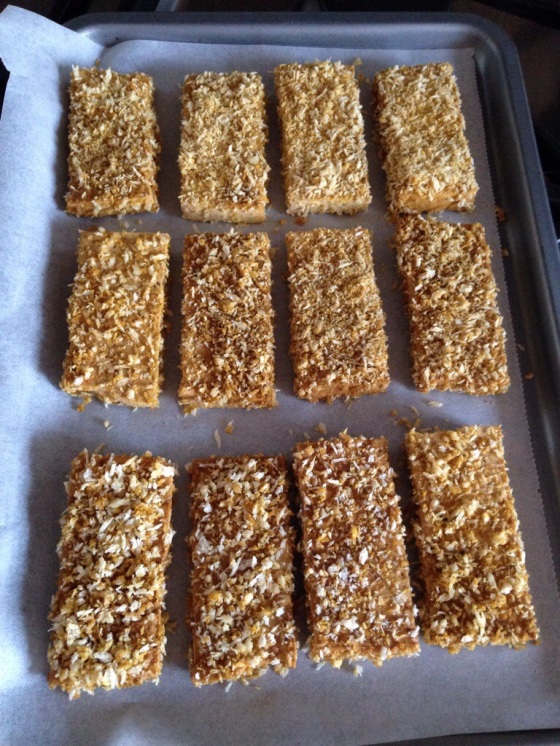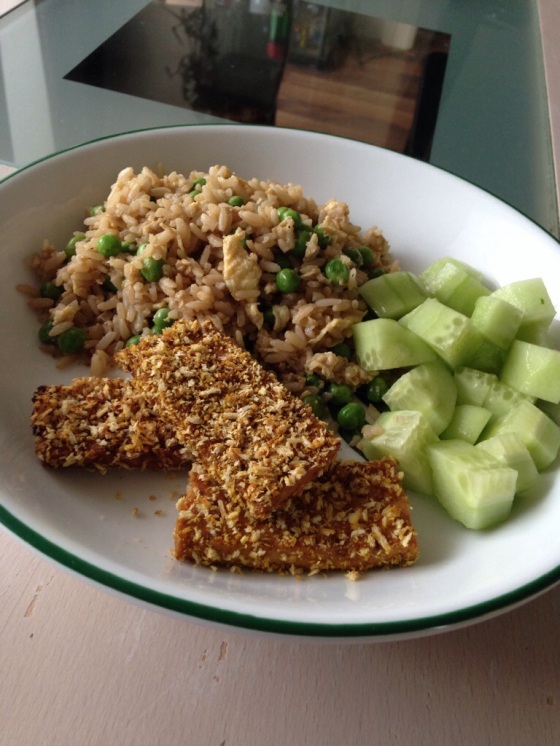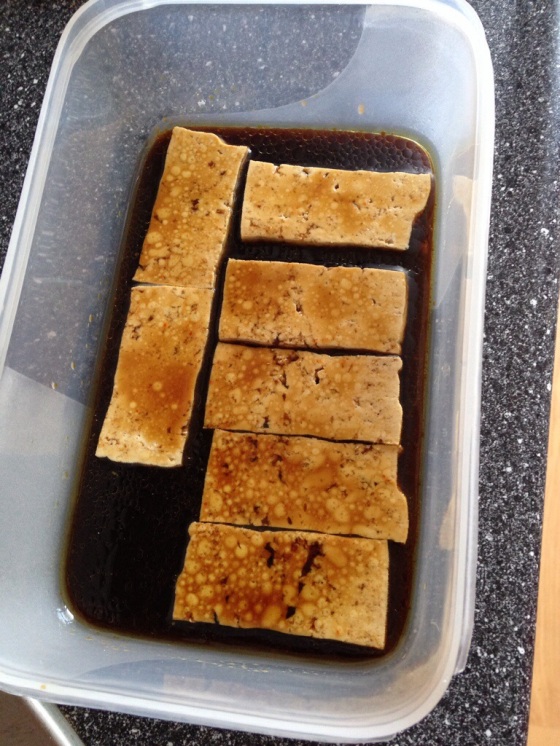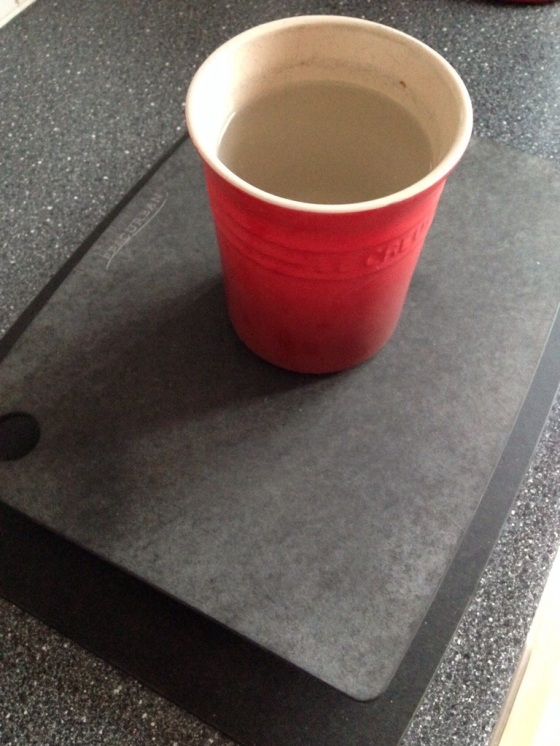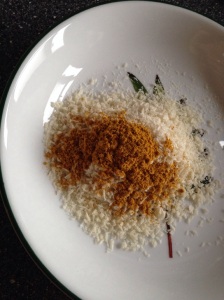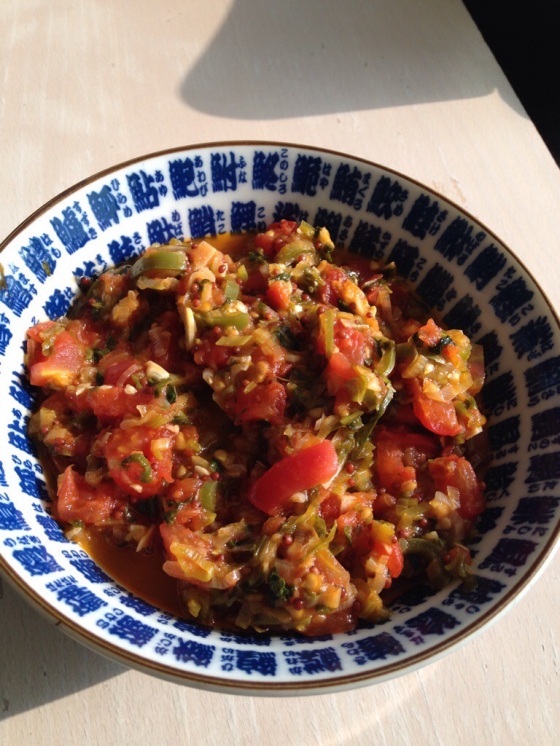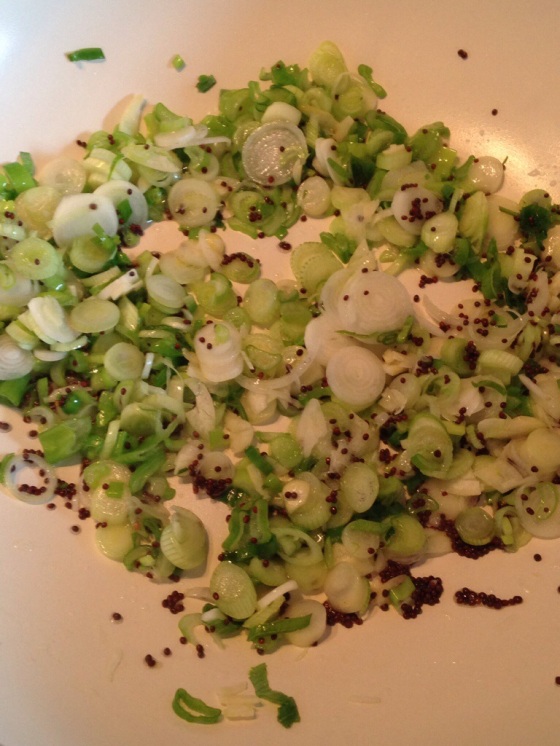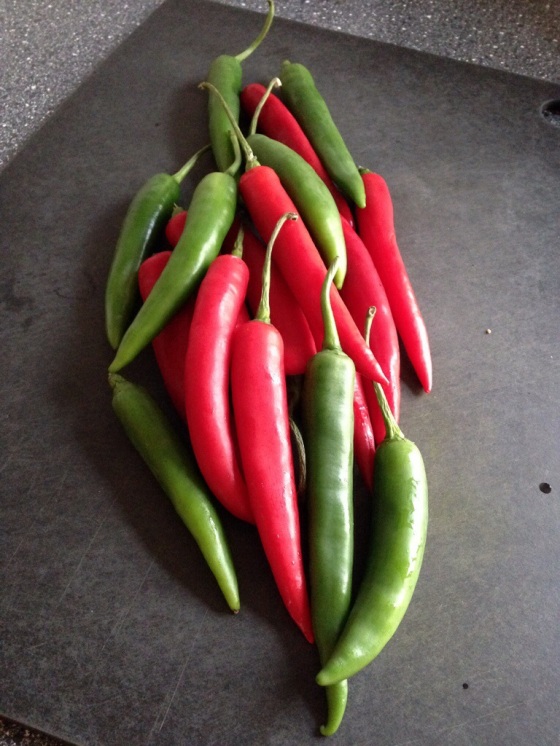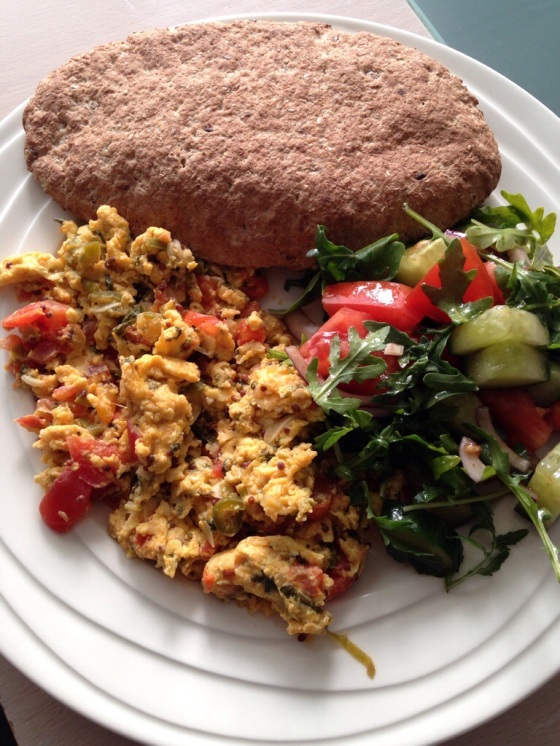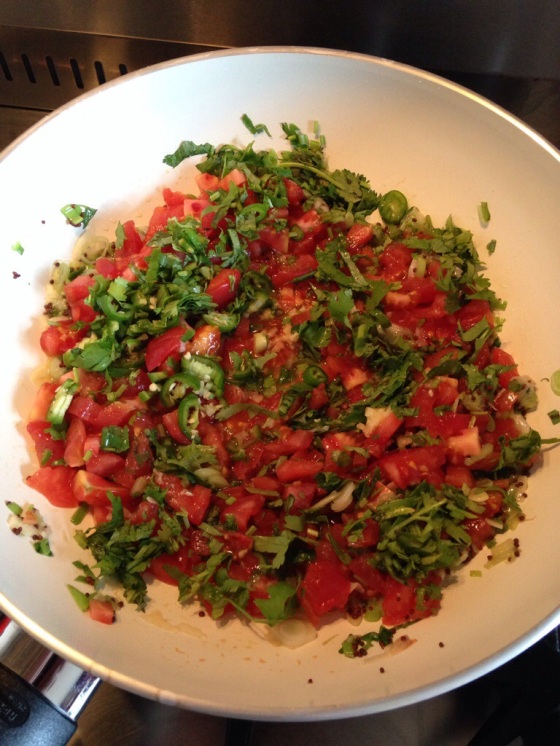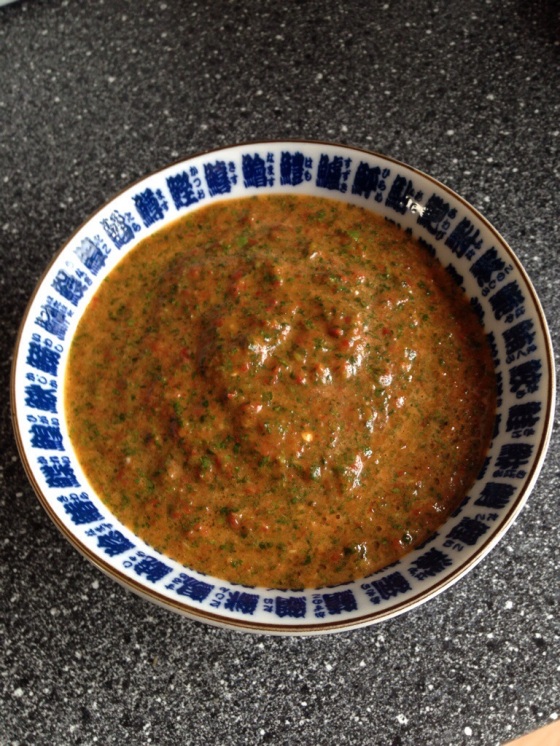 I couldn’t publish a blog post about sourdough pancakes without giving you a ‘recipe’ for a sourdough starter, so here goes. Creating a starter, or levain, couldn’t be easier. All you need is flour, water, a (plastic) container and a bit of patience. If you are new to sourdough, it pays to observe the process closely because that way you will get to know your starter and get a feel for it as it develops. Or maybe I should say ‘a feel for her/him’ because I think naming the blob is essential. It is after all a kind of pet that will need some tlc every now and again to keep it alive (or regular feeding, anyway). As this starter is made with rye flour, I have baptised it Ryely
I couldn’t publish a blog post about sourdough pancakes without giving you a ‘recipe’ for a sourdough starter, so here goes. Creating a starter, or levain, couldn’t be easier. All you need is flour, water, a (plastic) container and a bit of patience. If you are new to sourdough, it pays to observe the process closely because that way you will get to know your starter and get a feel for it as it develops. Or maybe I should say ‘a feel for her/him’ because I think naming the blob is essential. It is after all a kind of pet that will need some tlc every now and again to keep it alive (or regular feeding, anyway). As this starter is made with rye flour, I have baptised it Ryely
I have tried several recipes for starters, including one by Paul Hollywood and one from the River Cottage Handbook: Bread, but the one I am sharing here worked best for me. I used it to create my current starter, Tartarus, who recently celebrated his first birthday. This starter recipe comes from the wonderful Dutch baking blog Uit de keuken van Levine. I have translated it into English for you but if you would like to see the original, you can find it here.
So let’s go raise some fungi!
Day 1
100 g water
75 g rye flour (I used wholemeal when I made Tartarus)
25 g plain flour
Put water and flours in a clean container (I use transparent plastic containers for this, a clean one for each feed).
Mix with a clean spoon, then scrape down the sides with a rubber spatula. Put the lid on (loosely) and leave at room temperature for 24 hours.
At this point, you will have a thick paste. Don’t worry, your starter will look very different in the end. Although this starter is rye-based, you will only be feeding it plain flour in the end.
 Day 2
Day 2

You might see some bubbles, you might not. The mixture may smell a bit but that is fine. I have noticed that the smell is stronger if you use rye flour (it reminds me of salami, for some reason) instead of wholemeal flour.
100 g yesterday’s mixture (discard the rest)
75 g water
50 g rye flour
25 g plain flour
Mix with a spoon, scrape down sides, put lid on loosely. Leave for 24 hours.
Day 3
 If you are lucky, the mixture is now active and may even have doubled in volume. You may also only see a few bubbles, or nothing at all. Whatever the case, keep feeding/refreshing. In this case, my mixture was already very active and had even bubbled up. Don’t be fooled, however; you do not want to use your starter at this stage.
If you are lucky, the mixture is now active and may even have doubled in volume. You may also only see a few bubbles, or nothing at all. Whatever the case, keep feeding/refreshing. In this case, my mixture was already very active and had even bubbled up. Don’t be fooled, however; you do not want to use your starter at this stage.

The sides of the container show that the mixture has bubbled up and fallen.
100 g of yesterday’s mixture
75 g water
25 g rye flour
50 g plain flour
Mix with a spoon, scrape down sides, put lid on loosely. Leave for 24 hours.
Day 4
The mixture should be active and have doubled in volume by now. It may have collapsed to the level it had after the feed on day 3. If the mixture has not doubled, repeat day 3. If it has, proceed as below.

What a difference a day makes. The mixture that was so active yesterday only shows a few bubbles today. I had to repeat day three this time. Don’t worry if you have to do the same.
100 g of yesterday’s mixture (day 3)
75 g water
15 g rye flour
60 g plain flour
Mix with spoon, scrape down sides, put lid on loosely. Leave for 24 hours.
Day 5,6 and 7

Result! The starter is active and will only need a few more feeds before it can be used.
If the mixture has doubled (or even tripled) in volume in the past 24 hours it is almost ready to use. Only feed/refresh with water and plain flour from now on.
100 g of yesterday’s mixture
100 g water
100 g plain flour
Mix with a spoon, scrape down sides, put lid on loosely. Leave for 24 hours.
The starter will get lighter and thinner because you are only feeding it with plain flour. You can speed up the process now by feeding your starter every 12 hours instead of every 24 hours, providing it has risen and fallen in that time. The sides of the container will tell you if it has but you can also use a rubber band for this (see photos below).


If the mixture can double within 6-8 hours on day 7, your sourdough starter is ready to use.
If you need more starter you can feed it more by refreshing 100 g of levain with 200 g water and 200 g plain flour (1:2:2). You can also refresh/feed the part you would otherwise discard.
My starter usually lives in the fridge and can go without feeding for up to two weeks, although I usually feed it once a week. I do tend to feed and discard once before using it in bread if it has been in the fridge without a feed for that long. If the starter has split and there is water on top, simply mix with a spoon, discard and feed. Or make sourdough pancakes, of course.
There is so much more I would like to tell you about keeping a starter happy and baking with it, but I couldn’t possibly cover all that in one post. I am no expert on the subject but if you have any questions, please don’t hesitate to ask them.
 These little cakes achieved almost legendary status in an online foodie group I am part of. And with reason: these beauties are the stuff of dreams. They have a (deceptively) light texture, a perfect, delicate lemon flavour, and even though they look and taste like someting Marie-Antionette herself would not have sniffed at, they are not hard to make. The basic ingredients are ground almonds, egg whites, butter and icing sugar, in this case flavoured with lemon zest and lemon icing.
These little cakes achieved almost legendary status in an online foodie group I am part of. And with reason: these beauties are the stuff of dreams. They have a (deceptively) light texture, a perfect, delicate lemon flavour, and even though they look and taste like someting Marie-Antionette herself would not have sniffed at, they are not hard to make. The basic ingredients are ground almonds, egg whites, butter and icing sugar, in this case flavoured with lemon zest and lemon icing.
















